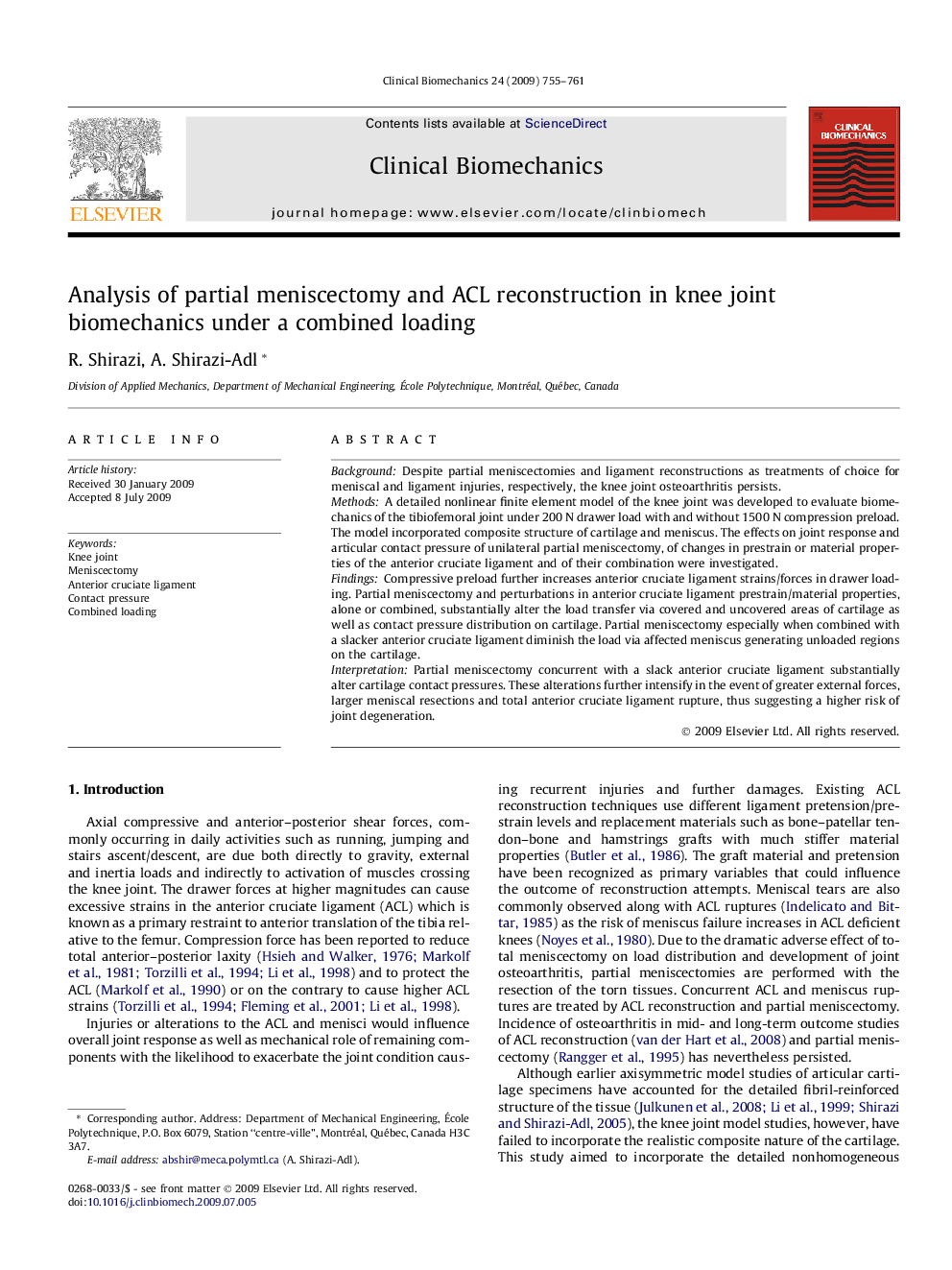| Article ID | Journal | Published Year | Pages | File Type |
|---|---|---|---|---|
| 4051284 | Clinical Biomechanics | 2009 | 7 Pages |
BackgroundDespite partial meniscectomies and ligament reconstructions as treatments of choice for meniscal and ligament injuries, respectively, the knee joint osteoarthritis persists.MethodsA detailed nonlinear finite element model of the knee joint was developed to evaluate biomechanics of the tibiofemoral joint under 200 N drawer load with and without 1500 N compression preload. The model incorporated composite structure of cartilage and meniscus. The effects on joint response and articular contact pressure of unilateral partial meniscectomy, of changes in prestrain or material properties of the anterior cruciate ligament and of their combination were investigated.FindingsCompressive preload further increases anterior cruciate ligament strains/forces in drawer loading. Partial meniscectomy and perturbations in anterior cruciate ligament prestrain/material properties, alone or combined, substantially alter the load transfer via covered and uncovered areas of cartilage as well as contact pressure distribution on cartilage. Partial meniscectomy especially when combined with a slacker anterior cruciate ligament diminish the load via affected meniscus generating unloaded regions on the cartilage.InterpretationPartial meniscectomy concurrent with a slack anterior cruciate ligament substantially alter cartilage contact pressures. These alterations further intensify in the event of greater external forces, larger meniscal resections and total anterior cruciate ligament rupture, thus suggesting a higher risk of joint degeneration.
